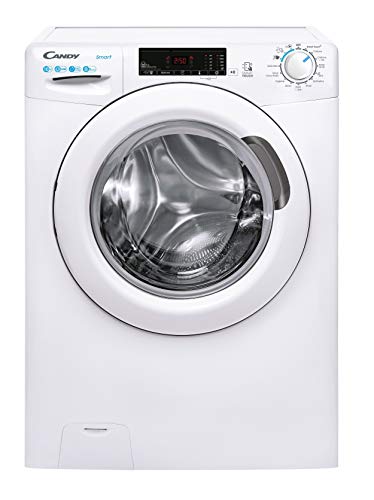How The 10 Most Disastrous 10kg Front Loader Fails Of All Time Could H…
페이지 정보
작성자 Stephanie Morel… 작성일 24-04-29 21:27 조회 14 댓글 0본문
 Why Buy a 10kg Front Loader?
Why Buy a 10kg Front Loader?The 10kg front-loader is perfect for large loads of laundry with 13 wash programs, including handwash and plenty of space for large wash cycles. It's a clever machine that comes equipped with the latest features.
Front loaders typically take longer to wash, and aren't available in larger capacities and frequently be affected by mildew and mould. However, they are more efficient in water and energy than top loaders.
Energy
The primary energy cost in a 10kg front loader is the power used to heat water to operating temperature, and 10kg Front Loader for running the motor. These costs can also be offset by less energy consumption when compared with top-loaders. This includes less power required during the spin cycle and agitation cycle, as well as using less water. Some machines offer low-water cycles that use less water than the cotton cycle. This saves both water and energy.
In general, front-loading washers use less soap than top-loaders. The drum's tumbling reduces foamy suds and also reduces overflows, but without affecting the cleaning action. The door seals as well as the bellows of top-loaders can be more prone to wear. In addition, a top-loader's mechanical agitator can cause considerable wear and abrasion to fabrics for clothing, since it presses clothes against one against each other using paddles that are constantly dropping and dragging them through the wash. This abrasion can be gauged by the amount of fabric that is accumulated in a clothes dryer's lint filter, since the majority of lint is made up of fragments of fibers that are ripped from clothes during drying and 10 kilo washing machine. A lot of top-loaders are designed to run at slower speeds and may include the "freshening cycle" to clean the bellows or mechanical gears regularly.
Water
Top-load washers need an impeller or agitator to force detergent and water through clothing, which causes mechanical wear and abrasion. Front-loaders on the other hand employ paddles to gently move clothes around a spinning drum during cleaning, reducing wear. The amount of lint contained in dryer lint filters can be used to determine the wear rate. Lint is mostly made of threads that are removed from clothes when drying and washing.
Front-loading machines are less prone to leak since they have a lower water level than top-loaders. True front-loaders might require a bellows or seal to stop water flowing out of the open door during operation, however they do not typically require maintenance at the same frequency as their counterparts on top-loaders.
Front-loaders are more energy-efficient than top-loaders because they can use hot or cold water and some even do so without an external heating source. This efficiency can reduce the cost of running the same laundry load, especially in areas where detergent, water, and energy are expensive.
- 이전글 10 Things People Get Wrong About The Word "Asbestos Claim"
- 다음글 3 Steps To An Extra Powerful Blog
댓글목록 0
등록된 댓글이 없습니다.